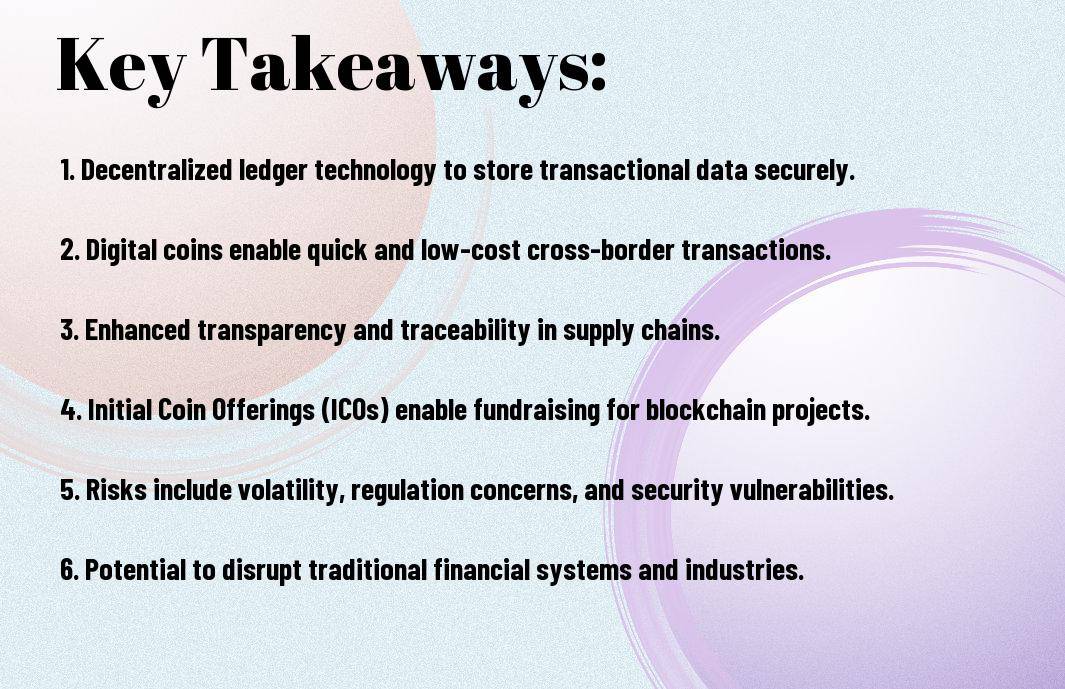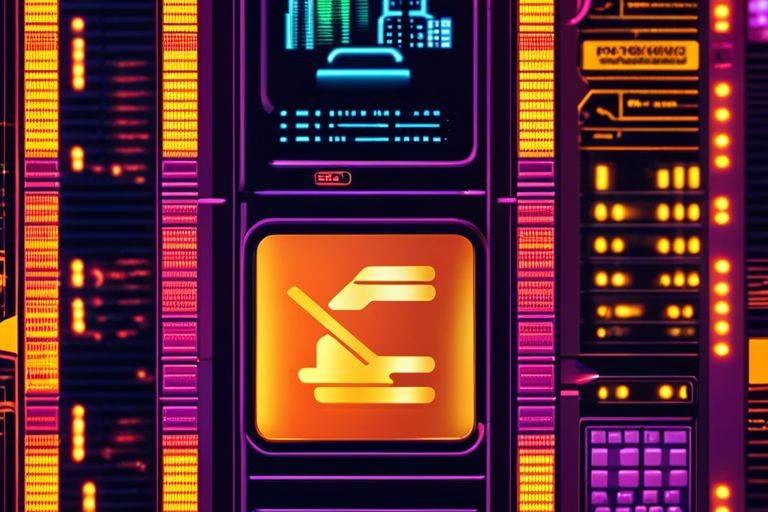Digital currencies have revolutionized the way we perceive and conduct financial transactions. Among the innovations brought by this digital era, blockchain technology stands out as one of the most groundbreaking. Blockchain, the underlying technology of digital coins such as Bitcoin and Ethereum, is a decentralized and secure way of storing and recording transactions across a network of computers. This technology has the potential to disrupt traditional financial systems and empower individuals with greater control over their assets.
Key Takeaways:
- Blockchain technology is the underlying technology that enables digital coins to function securely and transparently.
- Digital coins are a form of digital currency that exist solely in electronic form and operate independently of a central bank.
- Decentralization is a key feature of digital coins, as transactions are recorded on a distributed ledger that is maintained by a network of computers.
- Cryptocurrency is a type of digital coin that uses cryptography to secure transactions, control the creation of new units, and verify the transfer of assets.
- Bitcoin is the first and most well-known digital coin, introduced in 2009 by an unknown person or group of people using the pseudonym Satoshi Nakamoto.
- Ethereum is another popular digital coin that offers smart contract functionality, allowing developers to build decentralized applications.
- Initial Coin Offerings (ICOs) are a way for companies to raise funds by issuing digital tokens, which can represent a stake in the company or access to a product or service.

Understanding Blockchain
There’s Demystifying cryptocurrency and digital assets that plays a crucial role in understanding blockchain technology. To comprehend blockchain fully, it is important to research into its concept and history.
Concept and History
With the rise of digital currencies, the concept of blockchain emerged as a decentralized ledger system that records transactions across multiple computers. This technology was first introduced in 2008 by an anonymous person or group known as Satoshi Nakamoto as a core component of Bitcoin. With blockchain, every transaction is stored in a ‘block’ that is linked to the previous one, forming a chain. This design ensures transparency, security, and immutability of data.
How Blockchain Works
Understanding how blockchain works is crucial in grasping its potential impact on various industries. For instance, blockchain operates on a distributed network of computers (nodes) that validate and record transactions in blocks. Each block is then linked to the previous one, creating a chain that is cryptographically secure. This decentralized and transparent system eliminates the need for intermediaries, such as banks or clearinghouses, ensuring trust among participants in a transaction.
- Public Blockchain: Allows anyone to participate and read the ledger, such as Bitcoin.
- Private Blockchain: Access restricted to certain participants, commonly used in enterprise solutions.
- Consortium Blockchain: Operated by multiple organizations, suitable for collaborative efforts.
- Permissioned Blockchain: Control over who can participate and validate transactions.
- Hybrid Blockchain: Combination of public and private blockchain features for specific use cases.
The versatility of blockchain technology enables its adaptation to various sectors, including finance, supply chain, healthcare, and more. The immutable nature of blockchain ensures trust and security, making it a disruptive force in the digital era.
Advantages and Limitations
Blockchain technology offers numerous advantages, but it also comes with limitations that need to be addressed for widespread adoption.
Advantages: Blockchain provides transparency, security, efficiency, and decentralization in transactions. It eliminates the need for intermediaries, reduces fraud, and enhances trust among participants. Additionally, blockchain facilitates faster and cheaper cross-border transactions, making it ideal for global trade and finance.

Digital Coins and Cryptocurrencies
What Are Digital Coins?
The concept of digital coins, also known as cryptocurrencies, refers to digital or virtual currencies that use cryptography for security. These digital coins operate independently of a central bank and are typically decentralized using blockchain technology. Users can store, send, and receive digital coins through digital wallets.
The Birth of Bitcoin
CoinsThe first and most well-known digital coin is Bitcoin, which was introduced in 2009 by an unknown person or group of people using the pseudonym Satoshi Nakamoto. Bitcoin was created as a peer-to-peer electronic cash system, revolutionizing the way we perceive and use currency. Its decentralized nature and limited supply have contributed to its value and popularity in the financial world.
Altcoins and the Cryptocurrency Ecosystem
DigitalCoinsIn addition to Bitcoin, there are thousands of alternative cryptocurrencies, known as altcoins, that have entered the market. These altcoins offer variations in technology, features, and use cases compared to Bitcoin. The cryptocurrency ecosystem continues to evolve, with new altcoins being created to address specific challenges or improve upon existing blockchain technologies.
Cryptocurrency Wallets and Transactions
An important aspect of owning and managing digital coins is utilizing cryptocurrency wallets for storage and transactions. Cryptocurrency wallets can be hardware devices, software applications, or online services that securely store private keys required to access and manage digital coins. When making transactions using digital coins, users must submit encrypted messages using their private keys to verify and authorize the transfer.
Blockchain Beyond Bitcoin
Not just limited to powering the world of cryptocurrencies, blockchain technology has found various applications beyond Bitcoin. One of the most notable developments in this space is the emergence of Ethereum, a decentralized platform that enables the creation of smart contracts and decentralized applications.
Ethereum and Smart Contracts
To understand Ethereum, it is vital to grasp the concept of smart contracts. These self-executing contracts with the terms of the agreement directly written into code enable trusted transactions and agreements to be carried out without intermediaries. Ethereum’s blockchain facilitates the deployment of these smart contracts, opening up a world of possibilities beyond simple value transfer.
Other Blockchain Applications
One of the most exciting aspects of blockchain technology is its potential to revolutionize various industries beyond finance. From supply chain management to healthcare, blockchain offers secure and transparent solutions for data management and transaction processing. The immutability and transparency of blockchain make it an attractive choice for applications requiring auditability and trust.
Tokenization of Assets
With the rise of blockchain technology, the tokenization of assets has gained significant traction. This process involves converting real-world assets like real estate or art into digital tokens that can be traded on a blockchain. Tokenization offers increased liquidity and accessibility to assets that were traditionally illiquid, opening up investment opportunities to a wider range of investors.
With the potential to disrupt traditional finance and investment models, tokenization of assets brings efficiencies and opportunities that were previously unthinkable. This innovative approach to asset ownership has the potential to reshape the way we think about investments and transactions in the digital age.
Decentralized Finance (DeFi)
It is impossible to discuss blockchain’s evolution without mentioning the rise of Decentralized Finance (DeFi). This sector leverages blockchain technology to recreate traditional financial systems such as banking, lending, and trading in a decentralized manner. DeFi platforms enable users to access financial services without relying on intermediaries, offering more control and transparency over their assets and transactions.
This rapidly growing sector has unlocked a new wave of financial innovation and inclusivity by providing access to a wide range of financial services to anyone with an internet connection. DeFi has the potential to revolutionize the way we interact with money and financial services, empowering individuals with unprecedented control over their funds and financial decisions.

Mining and Consensus Mechanisms
Proof of Work (PoW)
For many blockchain networks, Proof of Work (PoW) is the consensus mechanism that validates transactions and creates new blocks. In PoW, miners compete to solve complex mathematical puzzles using computational power. The first miner to solve the puzzle gets to add the next block to the blockchain and is rewarded with new coins. This process requires significant energy consumption and computational resources.
Proof of Stake (PoS)
For Proof of Stake (PoS), validators are chosen to create new blocks based on the number of coins they hold and are willing to “stake” as collateral. This mechanism aims to reduce the environmental impact of mining, as it does not rely on the energy-intensive process of solving puzzles like in PoW. PoS is seen as a more energy-efficient alternative to PoW, promoting sustainability in blockchain networks.
Consensus mechanisms are crucial for ensuring the security and integrity of blockchain networks by establishing a common agreement among participants. In Proof of Stake (PoS), validators are economically incentivized to act honestly as their staked coins serve as collateral, at risk of being forfeited if they validate fraudulent transactions. This economic model aligns the interests of validators with the network’s security and stability.
Other Consensus Protocols
For Other Consensus Protocols, various alternatives to PoW and PoS have been developed, such as Delegated Proof of Stake (DPoS), Byzantine Fault Tolerance (BFT), and Practical Byzantine Fault Tolerance (PBFT). These protocols offer different approaches to achieving consensus, each with its unique advantages and trade-offs. Understanding these diverse consensus mechanisms is crucial for evaluating the security and efficiency of blockchain networks.
For instance, Other Consensus Protocols like DPoS rely on a small number of elected delegates to validate transactions, offering faster transaction speeds but potentially sacrificing decentralization. On the other hand, BFT and PBFT focus on creating consensus among a group of nodes through communication protocols, prioritizing fault tolerance and robustness against malicious attacks.
Environmental Concerns and Response
Proof of Work has faced criticism for its high energy consumption, leading to concerns about the environmental impact of mining operations. Some blockchain projects have responded by exploring alternative consensus mechanisms like Proof of Stake that require less energy-intensive processes. By promoting sustainability and reducing carbon footprints, these eco-friendly alternatives aim to address environmental challenges associated with blockchain technology.
Another key focus in the blockchain space is the development of eco-friendly solutions, such as proof-of-stake mechanisms and energy-efficient mining practices. These initiatives aim to mitigate the environmental impact of blockchain networks while still maintaining the security and decentralization that are core principles of the technology.
The Regulatory Landscape
Regulatory Approaches to Digital Coins
Keep pace with the rapidly evolving landscape of blockchain technology and digital coins is crucial for regulatory bodies worldwide. Regulatory approaches to digital coins vary significantly across different jurisdictions, with some countries embracing innovation and others taking a more cautious approach. Any regulatory framework must strike a balance between enabling innovation and protecting consumers and investors from potential risks.
Compliance and Anti-Money Laundering (AML)
Compliance and Anti-Money Laundering (AML) regulations are becoming increasingly important in the world of digital coins. Regulatory bodies are working to ensure that coins are not being used for illicit activities such as money laundering or terrorist financing. Landscape of AML regulations for digital coins is complex, with requirements varying from jurisdiction to jurisdiction, making compliance a challenging task for businesses operating in the crypto space.
Compliance with AML regulations involves implementing robust Know Your Customer (KYC) procedures, monitoring transactions for suspicious activity, and reporting any potential money laundering or terrorist financing activities to the relevant authorities. Coins are facing increased scrutiny from regulators, requiring them to adhere to stringent AML requirements to maintain their legitimacy in the eyes of the law.
Blockchain and Data Privacy
Blockchain technology offers a unique solution to data privacy concerns by providing a transparent yet secure way of recording transactions. However, issues surrounding data privacy on the blockchain remain a topic of debate. While blockchain offers pseudonymity, allowing users to conduct transactions without revealing their identities, ensuring the privacy of sensitive information poses a challenge.
As the use of blockchain technology continues to grow, finding the balance between transparency and data privacy will be imperative for the widespread adoption of blockchain solutions. Data protection regulations such as the General Data Protection Regulation (GDPR) are playing a crucial role in shaping how blockchain technology handles personal information while ensuring compliance with regulatory requirements.
Cross-Border Issues and Global Coordination
Blockchain technology transcends geographical boundaries, posing challenges for regulators seeking to enforce laws across borders. Global coordination is imperative to address cross-border issues such as jurisdictional conflicts, differing regulatory requirements, and legal uncertainties. Collaboration between countries and international organizations is imperative to create a cohesive regulatory framework that addresses the global nature of blockchain technology.

Risks and Security
Security Concerns with Blockchain and Digital Coins
An necessary aspect of the blockchain technology that underpins digital coins is security. With the decentralized and immutable nature of blockchain, there is a common belief that it is secure. However, the reality is that the technology is not immune to security risks and vulnerabilities.
Hacks and Fraud Cases
The history of blockchain and digital coins is riddled with hacks and fraud cases that have caused significant financial losses to individuals and organizations. These attacks, which range from phishing scams to sophisticated hacking techniques, highlight the vulnerabilities present in the ecosystem.
The decentralized and pseudonymous nature of blockchain transactions can make it challenging to trace and recover stolen funds, leading to a greater sense of risk and uncertainty among users.
Mitigation Strategies and Best Practices
Security measures must be continuously updated and adapted to stay ahead of evolving threats in the blockchain and digital coin space. Best practices include the use of multi-factor authentication, cold storage for digital assets, regular security audits, and robust encryption protocols.
Best practices such as secure coding practices and regular security training for developers and users can significantly enhance the overall security posture of blockchain platforms and digital wallets.
The Role of Security in Future Blockchain Developments
Security will play a crucial role in shaping the future development of blockchain technology. As the technology advances and becomes more mainstream, the need for robust security measures will only grow. Innovations in encryption, multi-party computation, and decentralized identity management will be key in addressing security challenges.
Understanding the evolving landscape of security threats and implementing proactive security measures will be critical in ensuring the long-term success and adoption of blockchain technology.
The Future of Blockchain and Digital Coins
After What is cryptocurrency and how does it work?, it is crucial to discuss the future of blockchain and digital coins.
Emerging Trends in Cryptocurrency
For those closely following the world of cryptocurrency, it’s evident that new trends are constantly emerging. One such trend is the rise of decentralized finance (DeFi), which aims to disrupt traditional financial systems by offering services such as lending and borrowing without the need for intermediaries. Furthermore, non-fungible tokens (NFTs) have gained popularity in the art and entertainment industries, showcasing a unique way of digital ownership and provenance verification.
The Integration of Blockchain in Various Industries
Blockchain technology is revolutionizing various industries, including supply chain management, healthcare, and voting systems. By utilizing blockchain, industries can improve transparency, security, and efficiency in their operations. A prime example is the healthcare sector, where blockchain ensures the secure and seamless sharing of patient data among different healthcare providers, ultimately enhancing patient care.
Plus,
Challenges and Opportunities Ahead
Blockchain technology faces several challenges as it continues to evolve. Scalability, interoperability, and regulations are some of the key hurdles that the industry must overcome to reach mass adoption. However, these challenges also present opportunities for innovation and growth. As more businesses and governments explore blockchain solutions, there is immense potential for collaboration and the development of new use cases.
Another,
The Potential Economic Impact
The integration of blockchain and digital coins has the potential to significantly impact the global economy. By streamlining processes, reducing costs, and enhancing security, blockchain technology can pave the way for increased efficiency and innovation across various sectors. Moreover, the adoption of digital coins can enable faster and cheaper cross-border transactions, opening up new opportunities for businesses and consumers alike.
With the rapid evolution of blockchain and digital coins, it is crucial to stay informed and adapt to these groundbreaking technologies to leverage their immense benefits and navigate the challenges that lie ahead. Educating oneself on the latest trends, fostering innovation, and embracing collaboration will be key in shaping the future landscape of blockchain and digital coins.
Final Words
The blockchain technology has revolutionized the way we perceive transactions and data management. By providing a decentralized and secure system, blockchain has opened up endless possibilities for various industries, with digital coins being one of the most prominent applications. As more businesses and individuals embrace the benefits of blockchain and digital coins, we can expect to see continued growth and innovation in the field.
FAQ
Q: What is Blockchain?
A: Blockchain is a decentralized, distributed ledger technology that records transactions across multiple computers in a secure and transparent manner.
Q: How does Blockchain ensure security?
A: Blockchain ensures security through cryptography, consensus mechanisms, decentralized network, and immutability of records.
Q: What are Digital Coins?
A: Digital coins are digital assets that operate as a medium of exchange using cryptography to secure transactions and control the creation of new units.
Q: What is the difference between Blockchain and Digital Coins?
A: Blockchain is the underlying technology that powers digital coins, while digital coins are the virtual currency or tokens that exist on a blockchain network.
Q: How are transactions verified in Blockchain?
A: Transactions in Blockchain are verified through a consensus mechanism where participants in the network validate the transactions to ensure accuracy and security.
Q: What is the role of miners in Blockchain networks?
A: Miners in Blockchain networks validate transactions, secure the network, and add new blocks to the chain by solving complex mathematical puzzles through a process called mining.
Q: Are Digital Coins regulated?
A: Regulation of digital coins varies by country, with some countries imposing strict regulations to prevent fraud and money laundering, while others are more lenient towards their usage.



